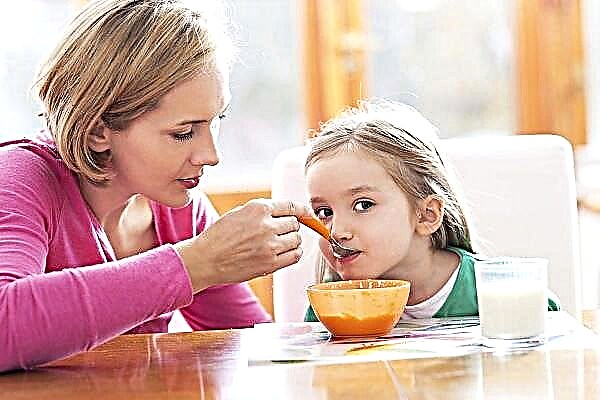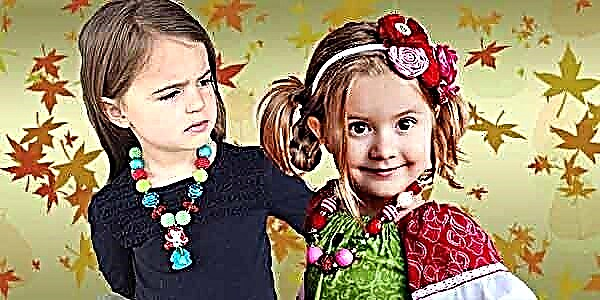Often, parents who are concerned about the nutrition of a small child ask pediatricians when mushroom dishes can be introduced into the children's diet, and how useful they are for children. Nutritionists can most reliably answer when you can give mushrooms to a child. They believe that mushrooms can be offered to babies in order to broaden their range of tastes, but from a certain age and taking into account the relevant requirements.

Mushrooms should be introduced into the children's diet with caution.
The benefits and harms of mushrooms
Nutritionists explain that, in principle, mushroom dishes are healthy food, as they contain a large amount of vitamins A, B, D and others. In addition to vitamins, they contain a lot of minerals and trace elements: these are magnesium, potassium, phosphorus, copper, and iron. When comparing the composition of mushrooms with the composition of other plant products, we can say that vegetables are closest to them. But even from vegetables, the gifts of the forest are distinguished by a huge protein content; in other products, there are no such carbohydrates at all that are present only in mushrooms. All this proves their benefits in human nutrition.
However, along with the benefits, experts warn about the dangers of mushrooms for the body of a small child. For example, a mushroom dish is difficult to digest due to the large proportion of chitin (a type of fiber) in it, which does not dissolve in the human digestive tract.
Important! Parents of young children need to understand well that forest mushrooms are representatives of natural microflora that produce toxins. Consequently, heavy metals accumulate in them, despite those places of growth where there is no excess of the maximum levels of harmful substances in the soil.
Adults can refute the arguments of experts by offering children artificially grown mushrooms, for example, champignons or oyster mushrooms. But even such species must be introduced very carefully, in compliance with all the requirements for their preparation, since the abundance of proteins in them affects the assimilation of mushroom dishes. Therefore, such food does not bring benefits to the baby.
At what age to give a child mushrooms
When parents ask at what age a child can be given mushrooms, experts warn about the need for great care when introducing this dish into the children's diet. For example, Dr. Komarovsky believes that mushroom broths are allowed for children only after the second year of life. The main thing is to cook them properly so that they are not only tasty, but also a safe dish. He draws the attention of parents to the fact that when choosing mushrooms, it is important to take into account their appearance and storage conditions.
Attention! It has been proven from what age you can give mushrooms to a child. At the age of 2-3 years, the dish is introduced into the diet with the permission of the pediatrician.
They begin to feed the kids with champignons or oyster mushrooms carefully and gradually, taking into account all the necessary requirements:
- Mushroom products are offered in minimal quantities;
- Mandatory monitoring of the body's reaction to a new dish;
- The dish should be cooked in the form of a sauce or soup, that is, well boiled.

Forest mushrooms should only be offered to older children
When to give champignons
Nutritionists explain that champignons should be the first mushrooms for children. They compiled a table on how and when you can give mushrooms to a child:
- At two years old, the product should not be an independent dish, only a small piece of champignon in a vegetable soup is offered;
- From three to five years, a freshly prepared dish of oyster mushrooms or champignons is introduced;
- Only 6-7 year old children are introduced to the diet from forest mushrooms: white, boletus, boletus, chanterelle, honey agarics.
Important! The dish is prepared in the most thorough way: the mushrooms are cleaned, pre-soaked in water and boiled. In no case should the product be wormy or overripe. Mushrooms go well with a side dish of vegetable puree, the fried option is excluded.
Why you can't give mushrooms to children under one year old
Experts have their own professional opinion on the introduction of mushroom dishes into the menu. So, pediatricians believe that there is no need to rush to include them in the children's diet, since the digestive system has not yet been fully formed until 2-3 years old. Therefore, it is difficult to predict how the body will react to this product.
Biologists explain why mushrooms are contraindicated at an early age: during the growth period, not only useful substances accumulate in the fruiting body, but also substances hazardous to health. Much depends on the condition of the soil, the ecological situation in the growing area, therefore, heavy metals are often found in forest gifts.
Important! Doctors explain their fears by the fact that regular consumption of forest gifts can cause acute poisoning of babies. For medical reasons, feeding a child with mushroom dishes is excluded if he has the following diseases: pancreatitis, dysbiosis, allergies.
Mushroom poisoning
Experts warn adults about the dangers that lie in wait if a child is poisoned with a mushroom dish. Moreover, you can even poison yourself with such harmless species as chanterelles, for example, if the cooking technology is violated or if there are a large number of them in the dish.

Mushroom poisoning is dangerous for the life and health of a small child
Attention! The greatest danger appears in a situation when, through an oversight of adults, a child tastes poisonous mushrooms.
Parents should understand that no processing of an unsuitable product (soaking, heat treatment, pickling, drying) is able to remove toxic substances hazardous to health and life. Doctors warn that if seven or more hours after eating mushrooms, a child develops dizziness, convulsions, diarrhea, cold sweat, abdominal pain intensifies, which means that poisoning has occurred. You need to immediately call an ambulance or go yourself with the baby to the hospital.
Symptoms of mushroom poisoning
Experts explain that mushroom poisoning can go through several stages. For example, if the baby has tried a small piece, then the poisoning is not critical. In this case, lethargy, mild abdominal pain, dizziness, nausea are observed. Symptoms of moderate poisoning are aggravated by profuse salivation, constriction of the pupils, and severe pain in the abdomen.
It is important for adults to know the symptoms that characterize severe mushroom dish poisoning:
- Confusion of consciousness appears;
- Characteristic yellowing of the skin;
- Painful vomiting does not stop;
- Weakness and headache appear;
- A noticeable increase in pressure.
What to do in case of poisoning
If a child has been poisoned by mushrooms, the main thing for parents is not to panic, act competently and decisively:
- First of all, you need to call an ambulance, and while she arrives, help the baby yourself. First of all, do a gastric lavage with plenty of cold boiled water. After the baby drinks the water, you need to press on the root of the tongue with a clean finger or the tip of a spoon to induce vomiting. After the emetic process, you can give activated charcoal to drink at the rate of one tablet per 10 kg of baby's weight.
- Waiting for an ambulance, the child is well wrapped in a blanket and covered with heating pads. High temperature has a detrimental effect on helvelic acid, the presence of which in mushrooms provokes severe intoxication of the body. Simultaneously with these procedures, the patient can be offered sweet tea and a cleansing enema. Such activities must necessarily be carried out before the arrival of the ambulance in order to alleviate the suffering of the child.
Mushroom allergy

Allergic reactions to mushrooms are an obstacle to their introduction into the child's diet
It has long been believed that mushrooms are active allergens that cause painful reactions in some people. It is good that such a reaction is quite vivid, and adults can quickly react to the deteriorating health of a small child.
You need to know the main reasons causing allergic reactions in order to protect the baby from adverse effects:
- Children are characterized by the immaturity of the digestive system. Therefore, the assimilation of mushrooms is difficult due to enzymatic insufficiency of the stomach and other factors that are eliminated only as they grow older.
- An obstacle to the assimilation of mushroom dishes is such chronic diseases of the digestive system as gastritis or pancreatitis.
- Some babies have a hereditary tendency to allergic reactions. For example, they may suffer from allergic rhinitis, bronchial asthma, or acquire allergic complications, that is, inherit similar pathologies. Such crumbs are more susceptible to a dangerous reaction to mushrooms.
Note. As a rule, allergic symptoms when eating oyster mushrooms or champignons appear very quickly. That is why children's nutritionists urge parents to closely monitor the child's first reaction to a mushroom dish for 15-20 minutes. But do not relax, as the reaction can occur several hours after ingestion of the allergen.
A careful examination of the child will help identify such manifestations of allergies as:
- Skin rashes;
- Scratching and itching of the skin;
- Sudden runny nose or sudden disturbance of nasal breathing;
- A cough with seizures or even a slight cough;
- Swelling of the eyelids, redness and watery eyes;
- Desire to vomit, nausea, complaints of heaviness in the abdomen;
- Stool disorder.
Such symptoms should alert parents and push them to take timely measures to alleviate the baby's condition.

A mushroom dish should bring food pleasure to the child
When composing a children's diet, each mother must responsibly decide what dishes can be offered to the child. The main thing is to listen to the opinion of experts, not to rush into introducing difficult-to-digest foods, including forest products, in order to avoid serious health consequences. Do not forget about compliance with all nutritional requirements for young children.



